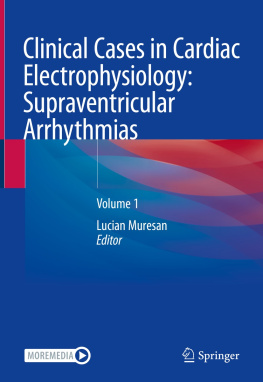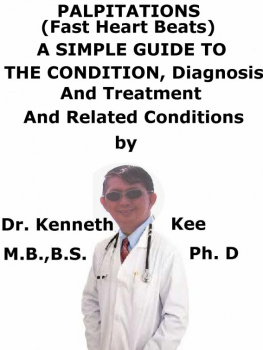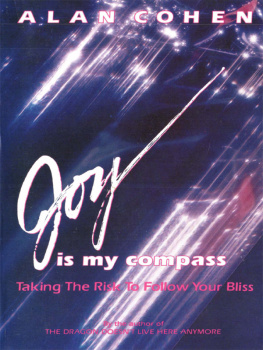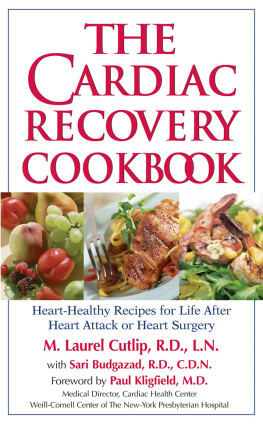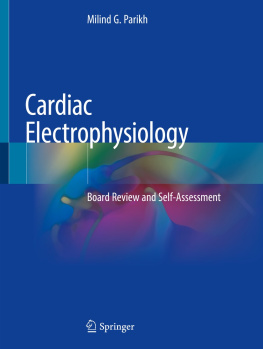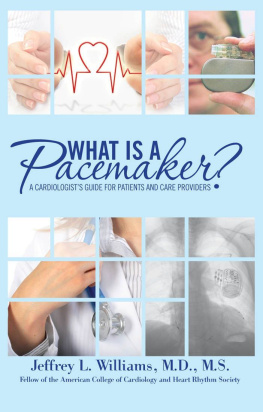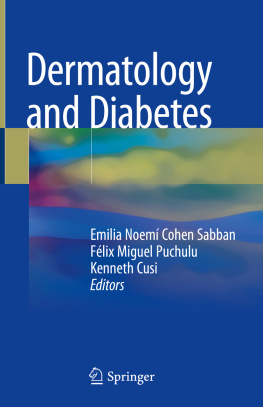A Patients Guide to Heart Rhythm Problems
A Johns Hopkins Press Health Book
A Patients Guide to Heart
Rhythm Problems
Todd J. Cohen, M.D., F.A.C.C., F.H.R.S.

Notes to the reader: This book is not meant to substitute for medical care and advice, and decisions about medical treatment and other matters should not be based solely on its contents. Instead, decisions must be developed in a dialogue between the individual and his or her physician. This book was written to help with that dialogue.
Drug dosage and devices: The author and publisher have made reasonable efforts to determine that the selection and dosage of drugs and devices discussed in this text conform to the practices of the general medical community. The medications described do not necessarily have specific approval by the U.S. Food and Drug Administration for use in the diseases and dosages for which they are recommended. In view of ongoing research, changes in governmental regulations, and the constant flow of information relating to drug therapy and drug reactions, the reader is urged to check the package insert of each drug for any change in indications and dosage and for warnings and precautions. This is particularly important when the recommended agent is a new or infrequently used drug.
2010 Todd J. Cohen
All rights reserved. Published 2010
Printed in the United States of America on acid-free paper
9 8 7 6 5 4 3 2 1
The Johns Hopkins University Press
2715 North Charles Street
Baltimore, Maryland 21218-4363
www.press.jhu.edu
Library of Congress Cataloging-in-Publication Data
Cohen, Todd J.
A patients guide to heart rhythm problems / Todd J. Cohen.
p. cm.
Includes bibliographical references and index.
ISBN-13: 978-0-8018-9774-0 (hardcover : alk. paper)
ISBN-10: 0-8018-9774-2 (hardcover : alk. paper)
ISBN-13: 978-0-8018-9775-7 (pbk. : alk. paper)
ISBN-10: 0-8018-9775-0 (pbk. : alk. paper)
1. ArrhythmiaPopular works. 2. ArrhythmiaTreatmentPopular works. I. Title.
RC685.A65C558 2010
616.128dc22 2010007500
A catalog record for this book is available from the British Library.
Figures 1.1, 1.2, 1.3, 8.1, 10.1, and 11.1 are by Jacqueline Shaffer.
Special discounts are available for bulk purchases of this book. For more information, please contact Special Sales at 410-516-6936 or specialsales@press.jhu.edu .
The Johns Hopkins University Press uses environmentally friendly book materials, including recycled text paper that is composed of at least 30 percent post-consumer waste, whenever possible. All of our book papers are acid-free, and our jackets and covers are printed on paper with recycled content.
Contents
Foreword
This book is a useful and informative guide for patients and their families dealing with cardiovascular disease and heart rhythm health issues. Even though sudden cardiac arrest is the nations leading cause of death, it is often misunderstood or confused with other cardiac conditions.
The Sudden Cardiac Arrest Association is dedicated to making patients more aware of sudden cardiac arrest. This awareness includes risk factors, emergency response, prevention, and treatment options. Dr. Todd Cohen shares our passion for making people smarter about their health and their medical care options. That is why we are grateful to him for his efforts in writing this book and doing it in a way that answers and addresses the many questions patients have about sudden cardiac arrest. A family history of heart disease or sudden cardiac death and a personal history of heart disease, smoking, obesity, or diabetes are reasons enough to pay attention to what Dr. Cohen has written.
Use this book as a reference and a guide. Make notes in the margins. Write down questions you want to ask your physician. If your primary care doctor does not have the answers, he or she can refer you to a cardiac specialist who can better address your concerns.
Your heart is an amazing thing. It pumps the blood and oxygen the rest of your body requires for your good health, and it is the symbolic center of the love you have for your family, friends, and everything you hold dear. So read this book to take care of your heart and to take care of those special people in your life.
Chris Chiames, Executive Director
Sudden Cardiac Arrest Association
Preface
This book is dedicated to my patients and to everyone with medical problems that need treatment. Various sources of information have been available to you over the years, including magazine articles, pamphlets (often provided by the manufacturers of implantable devices), and information your physician has provided in discussing your condition and treatment. This book is another source of information. It presents basic concepts of how the normal heart functions, and then expands on these concepts to discuss abnormalities in heart rhythms along with the consequences of heart rhythm disturbances. It discusses tests and studies used in diagnosing heart rhythm problems, and finally, it describes treatments and prevention measures.
My intention in this book is to provide background to help patients understand their diagnosis, any tests they may undergo, and how doctors might treat the problem. Illustrations and tables are provided to clarify the concepts.
Always ask questions. There is usually an opportunity before any procedure for your doctor and his or her team to answer all your questions and to make sure you are entirely comfortable before proceeding. What is best for you must be considered individually. It is with all these factors in mind that I wrote this book, as a resource for patients, their families, and their loved ones. I hope it helps you gain further understanding of your condition, and I hope it helps you get better and stay well.
PART ONE
The Basics
CHAPTER 1
Overview
Your Heart
Your heart is a muscular structure, located in the middle of your chest, that pumps blood throughout your body. It is a vital organ with both electrical and mechanical components. The electrical system produces a rhythm, and the mechanical components provide the pumping. Mechanically, the heart has four chambers and four valves, as shown in . The heart consists of two upper chambers and two lower chambers. Each upper chamber is called an atrium (right atrium and left atrium). Together, these chambers are called the atria. They receive blood, which is then pumped into the lower chambers. The lower chambers, called the ventricles (right ventricle and left ventricle), pump blood to the lungs and to the rest of the body.
The electrical system (which is also called the conduction system) tells the heart (and its chambers) when and in what sequence it should contract and relax to pump blood to the rest of the body (). The electrical impulses begin high up in the right atrium, in a structure called the sinus, or sinoatrial, node (SA node). A node is defined as a beginning structure or a point for electrical signals to come together and then be redirected to another region in the heart. There are two nodes in the heart: the SA node and the AV node. Impulses move from the SA node across the atrial structures to the AV node (located in the middle of the heart, between the atria and ventricles). A small delay in the electrical signal typically occurs in the AV node before the impulse travels to the His bundle; it then moves down through the right and left bundles to specialized Purkinje fibers before activating the ventricles.
Next page


